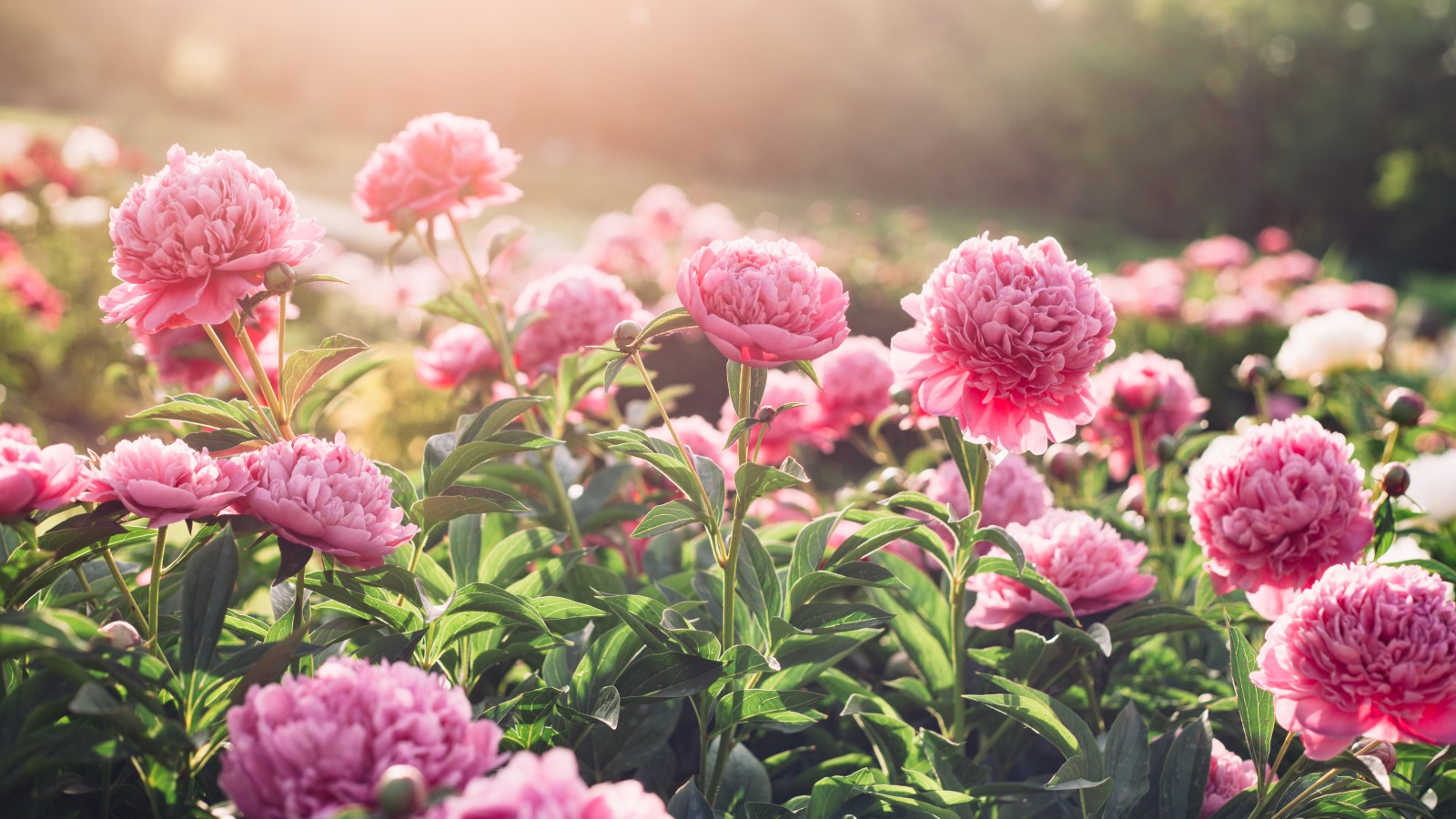Should you deadhead peonies? Expert reveals the benefits of removing spent flower heads
Learn how to deadhead peonies to both neaten the plant and help ensure more beautiful blooms next year


Q. I have clumps of peonies in my yard that put on a beautiful display every spring and then quickly start to look rather messy. Is it recommended to deadhead my peonies after they have finished flowering?
A: Peonies should be deadheaded as by removing the dead and dying flowers it helps to neaten up their appearance, reduce any risk of fungal infections, and also promote a healthier plant ready to flower again next spring.
When growing peonies, the task of deadheading should always be encouraged every year as blooms can quickly turn brown and unsightly. Deadheading is a very simple task and it will give the plant a good tidy for the months ahead until you cut peonies back completely in fall.

Deadheading peonies prevents heavy old flower heads damaging the foliage
Benefits of deadheading peonies
Peonies have a short flowering season and their large blooms are highly anticipated. The main growing season for peonies is during the spring and early summer and their blooms can last from six weeks from the middle of May and through June.
After the plant has finished flowering in June, you do not cut back peonies until the fall as you want to leave the healthy foliage on the plant to allow it to create the energy for next spring’s blooms.
You do want to deadhead peonies after they have flowered. Removing the spent flowers will ensure the energy of the plant is diverted into the roots and foliage, where it is required for photosynthesis and flowers. It will also neaten up the whole plant, as old peony flower heads look large and unappealing once they have gone over.
Mary Jane Duford, gardening expert and founder of Home for the Harvest, says that deadheading is ‘generally beneficial for the health of the plant’ as it maximizes foliage health and energy production for the upcoming cold season and blooms next spring.
Design expertise in your inbox – from inspiring decorating ideas and beautiful celebrity homes to practical gardening advice and shopping round-ups.
‘Removing the dead flowers can also reduce the incidence of common fungal diseases that affect peonies, both by eliminating the moist, contained environments of spent flower heads and also by opening up the foliage for better air circulation,’ she adds.
‘Lastly, taking off the spent flowers can help keep the flower stalks from flopping over and damaging the remaining foliage, which is particularly an issue for heavier double peony cultivars.’
If your peonies are not blooming, fungal diseases could be one potential reason to explain this. The process of deadheading and then cutting back in fall can prevent fungal diseases affecting the plant. Other ways to guarantee beautiful blooms every spring include fertilizing peonies, which is especially important if you are growing peonies in pots.

Mary Jane Duford is a gardening expert and founder of the gardening website Home for the Harvest. She is also a Professional Engineer, a certified Permaculture garden designer, and a Master Gardener-in-Training

Deadheading reduces the risk of fungal infections damaging next year's blooms
How to deadhead peonies
Deadheading is a vital part of any annual garden maintenance regime and a common practice that benefits both the health and appearance of plants.
With peonies, it is very a very simple task that can be completed in just four super-simple steps:
- Start with a clean and sharp pair of pruning shears. It is crucial to clean and sharpen pruning shears to make clean cuts and reduce any chance of disease infecting the plant. Good practice is to clean garden tools after every use
- Identify a spent flower stem and follow that stem down from the spent flower head to the first set of healthy leaves or remaining bud
- Make a clean cut just above the leaves or bud stem and avoid damaging or removing any healthy foliage from the plant
- Remove and compost the spent flower head. Mary Jane Duford advises: ‘Flowers from healthy plants can be composted at home, while plant matter from diseased specimens is most commonly sent to municipal yard waste for industrial hot composting.’
Corona AC 8300 Garden Tool Blade Sharpener | Available at Amazon
Keep your garden tools sharp with the Corona blade sharpener. Make 4-5 passes on the cutting side of the blade to keep tools cutting like new. The sharpener is pocket-sized, so you can keep pruning shears sharp while out in the yard
Peonies are a fantastic choice for any cottage garden ideas, they come to the fore in late spring and their appearance can signal the start of summer. The window to plant peonies is either in April, May or September and there is a wealth of cultivar choices out there for you to choose from.
Their blooming period may be short, but they are stunning, so enjoy them while they put on their show and remember to deadhead the spent flowers for the benefit of your peonies.

Drew has worked as a writer since 2008 and was also a professional gardener for many years. As a trained horticulturist, he worked in prestigious historic gardens, including Hanbury Hall and the world-famous Hidcote Manor Garden. He also spent time as a specialist kitchen gardener at Soho Farmhouse and Netherby Hall, where he grew vegetables, fruit, herbs, and cut flowers for restaurants. Drew has written for numerous print and online publications and is an allotment holder and garden blogger. He is shortlisted for the Digital Gardening Writer of the Year at the 2025 Garden Media Guild Awards.
